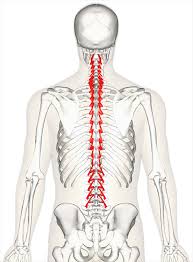Is your back tightness because of a muscle?
Back tightness and pain is so common that about 80% of us are going to deal with it at some point in our life. The downside is the way that most doctors understand and treat back tightness and pain is no different than it was 50 years ago. Most doctors don’t even know the cause of most peoples back tightness! The good news is that at my Dry Needling Clinic and Acupuncture Clinic in Tampa, FL, I take a completely different approach to managing and treating low back pain and tightness! Let’s dive into the most important back muscle that if you asked your regular doctor or even your orthopedic doctor about, they wouldn’t know what to do with it.
When it comes to back pain, it’s all about stability.
The back has 2 different ways to keep itself stable, because if your back is unstable you get wear and tear, irritated nerves and degeneration. The first stability system is made up of passive elements like ligaments, facet joints, and discs. Each of these limit motion between the bones (vertebrae).
For most activities it’s the muscles that do the stability work. Think of these important muscles an adaptive shock absorber system that can adjust in a split second and keep the back bones aligned with exact precision. This can only happen because there are nerves that sense exactly where you are in time and space.
The muscles that cause back tightness
There are small little muscles (Multifidus) and larger muscles (Erector Spinae). For the most part the Multifidus provide most of the overall stability of the spine because they are deeper and can create more leverage. When they get injured and don’t do their job properly, the bigger back muscles try to pick up the slack. When this happens your back can feel tight.
Why is this important?
When the back bones aren’t kept aligned during activity, the joints, disc, and nerves that come out between the bones can get pinched, irritated or slowly damaged.
What can take these multifidus muscles out of the stability picture?
An irritated nerve in the low back is usually the culprit. You may not be aware of the nerve being a problem other than your back gets tight when you’re active.
What can be done?
First you have to calm down the irritated nerve. We usually use a very specific type of electro-acupuncture that most doctors, acupuncturists and your weekend trained physical therapist definitely is not trained in. Then we want to turn the deep stabilizing muscles back online (again with this very specialized type of electro-acupuncture & dry needling).
The good news?
Your back pain is likely caused by these little stability muscles not doing their job properly. We can help to jumpstart them to do their job properly with specialized electro-acupuncture & dry needling and you can avoid rounds and rounds or cortisone shots, a lifetime of


